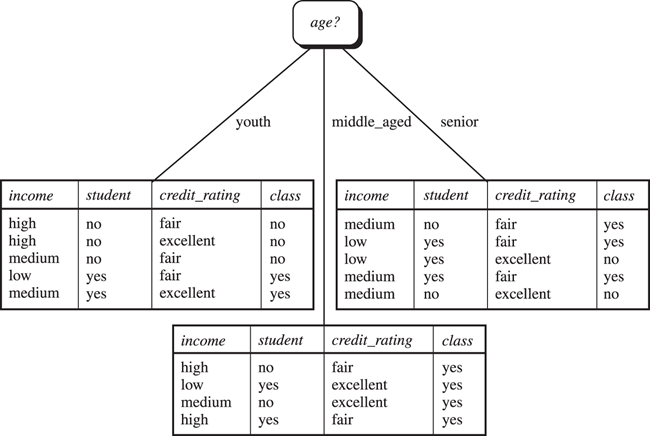Information Gain
- This was a very early method that sprang from AI research in ID3, and was refined further to become Gain Ratio in C4.5.
- It selects the attribute to split on with the highest information gain 选择信息增益最大的属性来拆分节点
- Let
 be the probability that an arbitrary tuple in
be the probability that an arbitrary tuple in  belongs to class
belongs to class  , of
, of  classes, where
classes, where  is the set of tuples in
is the set of tuples in  labelled with class
labelled with class 
- Expected information (entropy) needed to classify a tuple in
 is defined by
is defined by
- After using attribute
 to split
to split  into
into  partitions, corresponding to each attribute value for
partitions, corresponding to each attribute value for  , each one of these partitions being
, each one of these partitions being  , the information that is still needed to separate the classes is:
, the information that is still needed to separate the classes is:
Example (continued from previous)
Consider 2 classes: Class P is buyscomputer = “yes”. Class _N is buyscomputer = “no”
For some partition on  with
with  examples of _P and
examples of _P and  examples of N, let
examples of N, let  be written as
be written as  .
.
Using the definition  from above,
from above,
we have 
Now consider the first partition on _age. _We have the following
Therefore
Similarly,
So Gain(age) is optimal and we split on age to get








